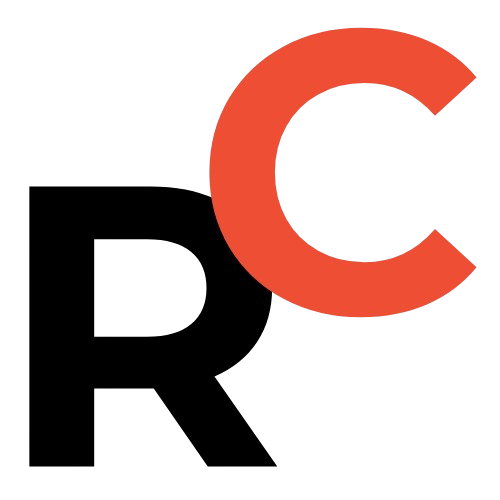Key Points
- Next pricing window: 24:00 on October 27, 2025 — market trackers widely expect a downward adjustment, potentially the ninth cut of 2025.
- Estimated magnitude: reference crude average $60.44/barrel (rate of change -6.22%) → recommended retail cut ~¥290 RMB/ton, about ¥0.22–0.24 RMB/liter, saving roughly ¥11.5 RMB ($1.58 USD) on a 50L fill.
- Year‑to‑date context: pricing pattern currently “six increases, eight decreases, six holds” (would become “six increases, nine decreases, six holds” if cut occurs); net vs. end‑of‑last‑year: gasoline down ~¥480 RMB/ton, diesel down ~¥460 RMB/ton.
- Outlook & risks: short‑term rebounds possible from geopolitical events, but OPEC+ production and structural oversupply keep pressure; analysts like 刘炳娟 (隆众资讯) judge a higher probability of no change rather than a large increase in the next round.

Domestic fuel prices are poised for another downward move when the next retail fuel-price adjustment window opens at 24:00 on October 27, 2025.
Multiple market trackers and analysts expect this round to be another downward adjustment — potentially the ninth cut of the year.
What’s happening: retail fuel-price window and likely outcome
The next retail fuel-price adjustment window opens at 24:00 on October 27, 2025.
Analysts and market trackers widely expect a downward adjustment.
This could be the ninth retail price cut in 2025 if it goes ahead as predicted.

Resume Captain
Your AI Career Toolkit:
- AI Resume Optimization
- Custom Cover Letters
- LinkedIn Profile Boost
- Interview Question Prep
- Salary Negotiation Agent

Analysts’ read on market drivers — crude futures, inventories, and sentiment
Zhuochuang Information (卓创资讯) analyst Zheng Mingya (郑明亚) told Zhongxin Jingwei (中新经纬) that macro sentiment is cautious and crude futures traded at persistently low levels during the pricing cycle.
Zheng noted that U.S. crude and gasoline inventories briefly fell in sync — giving futures a short-lived lift — but the overall rate of change stayed negative.
Zheng’s conclusion: “This retail price round will very likely finish lower.”
Jinlianchuang (金联创) analyst Wang Shan (王珊) also flagged a post-fall rebound in crude, but emphasized prices are moving inside a wide negative rate-of-change band because of persistent downward pressure.

Estimated magnitude and direct consumer impact
Jinlianchuang’s calculations show the reference crude average through the ninth working day of the pricing period (as of October 24) was $60.44 per barrel, with a calculated rate of change of -6.22%.
That corresponds to a recommended retail cut of ¥290 RMB ($39.73 USD) per ton for gasoline and diesel.
Translated to consumer pump prices, that magnitude implies a per‑liter reduction of roughly ¥0.22–0.24 RMB ($0.03–$0.03 USD) per liter.
For a typical small car with a 50‑liter tank, that equals about ¥11.5 RMB ($1.58 USD) saved when filling from empty.

Find Top Talent on China's Leading Networks
- Post Across China's Job Sites from $299 / role, or
- Hire Our Recruiting Pros from $799 / role
- Qualified Candidate Bundles
- Lower Hiring Costs by 80%+
- Expert Team Since 2014
Your First Job Post

Year‑to‑date pattern and what the numbers tell investors
Domestic retail fuel-price windows have opened 20 times in 2025 so far, producing a sequence summarized as “six increases, eight decreases, six holds.”
Netting gains and losses, retail gasoline and diesel prices are down about ¥480 RMB ($65.75 USD) and ¥460 RMB ($63.01 USD) per ton, respectively, compared with the end of last year.
If this expected cut lands, 2025’s pattern would shift to “six increases, nine decreases, six holds.”

ExpatInvest China
Grow Your RMB in China:
- Invest Your RMB Locally
- Buy & Sell Online in CN¥
- No Lock-In Periods
- English Service & Data
- Start with Only ¥1,000

Next scheduled windows & the timing rule
Under the “ten business days” rule for domestic retail adjustments, the following pricing window after October 27 is scheduled to open at 24:00 on November 10, 2025.

Outlook — short term vs. medium‑to‑long term
Xingye Futures (兴业期货) warns that geopolitical tensions and tighter Western sanctions on Russia could support a short-term rebound in oil prices.
But medium‑to‑long‑term oversupply risks remain significant, keeping prices volatile.
Liu Bingjuan (刘炳娟), refined-fuels analyst at Longzhong Information (隆众资讯), highlights that the Israel–Palestine and Russia–Ukraine situations remain unstable and that Western sanctions persist.
At the same time, Liu points out OPEC+ production increases create a chronic oversupply risk, which makes a big retail increase less likely in the near term.
Liu’s judgement: a higher probability that the next pricing round could end with no change rather than a large increase.

Key figures at a glance — quick reference for investors and operators
- Reference crude average: $60.44 per barrel (rate of change: -6.22%).
- Estimated retail cut: ¥290 RMB ($39.73 USD) per ton.
- Estimated per‑liter reduction: ¥0.22–0.24 RMB ($0.03–$0.03 USD) per liter.
- Savings on 50L tank: ~¥11.5 RMB ($1.58 USD).
- Year‑to‑date net change vs. end of last year: gasoline down ~¥480 RMB ($65.75 USD) per ton; diesel down ~¥460 RMB ($63.01 USD) per ton.
Note: Currency conversions above use a working exchange rate of 1 USD ≈ ¥7.30 RMB for illustrative purposes; small rounding differences may appear depending on the exact market rate at settlement.

Practical takeaways — what founders, investors, and marketers should watch
- Short‑term traders should watch crude futures and weekly U.S. inventory prints for volatility triggers.
- Fuel retailers need to prepare pricing and margin scenarios for a ¥0.22–0.24 per liter cut and consider promotions to retain volume.
- Auto fleet operators can use the expected small cut to optimize refueling schedules for immediate cash savings.
- Energy investors should weigh geopolitical risk cues (Israel–Palestine, Russia–Ukraine) against structural oversupply from OPEC+ when modeling mid‑term returns.
- Marketers building content for consumers can highlight tangible savings like the ¥11.5 RMB ($1.58 USD) on a 50L fill to drive attention and conversions.

What to monitor next — data points & signals
- Daily movement in crude oil futures and the reference average leading up to the pricing window.
- U.S. crude and gasoline inventory changes and whether they sustain or reverse recent short-term drops.
- OPEC+ production announcements and sanction developments affecting Russian exports.
- Official retail price notice at 24:00 on October 27, 2025, and the following window on November 10, 2025.

Linking opportunities (internal and external)
- Internal: Link to your site’s “energy market updates” or “commodities outlook” pages.
- Internal: Create a calculator page for consumers to compute savings on different tank sizes using the ¥0.22–0.24 per liter range.
- External: Link to official data sources for crude inventories and futures prices to improve authority.
- External: Reference regional news coverage on Israel–Palestine and Russia–Ukraine for geopolitical context.
Bottom line: watch the 24:00 October 27, 2025 pricing window — the odds favor a modest retail cut that could save drivers about ¥11.5 RMB ($1.58 USD) on a 50L fill and reinforce the ongoing downward trend in domestic fuel prices.

![China Market Momentum: Hong Kong & US-Listed Chinese Stocks Catch a Bid [FreshFromChina]](https://freshfromchina.com/wp-content/uploads/2025/05/China-Market-Momentum-Hong-Kong-US-Listed-Chinese-Stocks-Catch-a-Bid___FreshFromChina-150x150.png)


